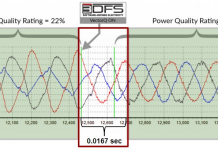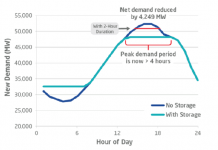I’m a fan of investing in electricity transmission, both because the grid in the US is in a sad state of repair, and because considerable expansions to the grid will be needed to take large scale renewable energy (especially concentrating solar and wind) from the lightly inhabited areas with renewable energy resources to population and demand centers.
Unfortunately, the need for new transmission can put renewable energy advocates at odds with more traditional environmentalists, who are concerned about the local damage to views and habitat caused by new transmission lines. Cases in point are opposition which looks like it will prevent a proposed new line in West Virginia, and opposition to the "Green Path" transmission line which was proposed to allow geothermal, solar, and wind development in the Salton Sea area of Southern California.
environmentalists, who are concerned about the local damage to views and habitat caused by new transmission lines. Cases in point are opposition which looks like it will prevent a proposed new line in West Virginia, and opposition to the "Green Path" transmission line which was proposed to allow geothermal, solar, and wind development in the Salton Sea area of Southern California.
If new transmission is not built, we won’t be able to wean ourselves from fossil fuels quickly, and the global effects of climate change will cause more disruption to ecosystems than any number of transmission towers would.
Investors Take Note
No matter where you stand in the debate, the issue is a serious one for Renewable Energy and Transmission investors. If the lines don’t get built, neither will the clean energy generation. For transmission investors, opposition to new lines means that the US grid will have to make current rights of way work harder and transmit more electricity, since fewer new lines will be built than if there were no opposition to new transmission.
Transmission investors concerned about NIMBY opposition should tilt their portfolios more towards technologies that allow for line upgrades than towards builders of new lines. This can be by either upgrading the existing lines with higher capacity technology, or by managing the grid better.
I can think of three companies which might be insulated from a lack of new rights-of-way, because they have technology for upgrading the existing grid. First, there is Composite Technology Corp., which was my #4 Speculative pick for 2008. In that article I describe Composite Technology’s (OTC BB:CPTC) ACCC cable which can be used to replace conventional conductors to upgrade power lines without the need to make any alterations to the towers. This can lead to as much as a doubling of the capacity of an existing transmission corridor at very low cost to the transmission owner.
For larger scale upgrades needed for very long distance transmission, as well as for new long distance transmission lines, the technology of choice is likely to be High Voltage DC Transmission (HVDC). The top suppliers of HVDC technology are The ABB Group (NYSE:ABB), and Siemens (NYSE:SI). See this article about ABB’s HVDC technology for more information.
I’m looking for more ideas in this area. I love the desert, and don’t want to see any more new transmission towers than absolutely necessary. On the other hand, I don’t want to see more and more of our land turned into desert because of Climate Change.
DISCLOSURE: Tom Konrad and/or his clients have long positions in ABB, SI, and CPTC.
DISCLAIMER: The information and trades provided here are for informational purposes only and are not a solicitation to buy or sell any of these securities. Investing involves substantial risk and you should evaluate your own risk levels before you make any investment. Past results are not an indication of future performance. Please take the time to read the full disclaimer here.









Most of what I’ve been reading about tomorrow’s transmission talks about a new grid using high density direct current lines (HDVC).
HVDC cables can carry more power for the same thickness of cable compared with AC lines. Modern HVDC cables can keep energy losses down to around 3% per 1,000km and can also be used to synchronize AC produced by renewable energy sources.
All of which means that DC lines become economically superior to AC if you’re moving power more than 500 miles.
DC lines have other advantages: they can help avoid the loop flow problems that affect AC lines, and they can be sited along railroad right-of-ways (AC lines cause induced currents if you put them near a long conductor like a railroad track).
That could be important in the U.S. with its myriad NIMBY issues and concerns.
I agree, Kevin. I wrote about HVDC in my article about ABB Group.
The one downside of HVDC is that it’s hard to take power on and off, so they do not necessarily make a good choice for feeders to gather wind energy.